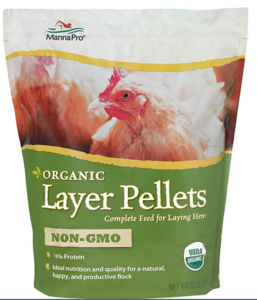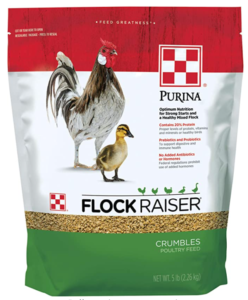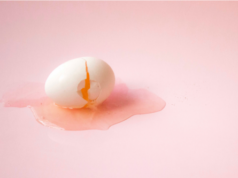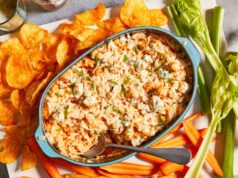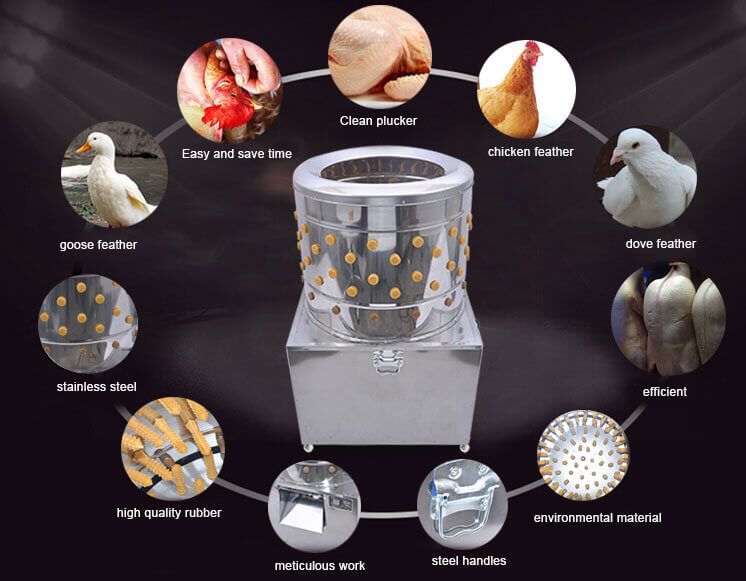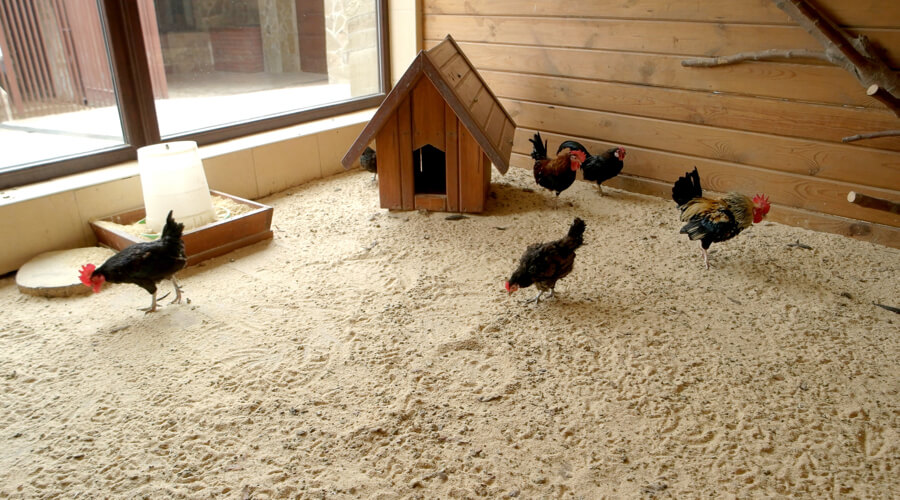Organic chicken rearing takes place in Germany under strict guidelines, so that not every chicken farm automatically receives the seal of quality. One of the basic requirements is that the hens receive the appropriate organic chicken feed, which has a positive effect on their well-being and the eggs. In this article, you will find out what to look out for about organic chicken feed and where you can get it.
What is the organic chicken feed?
The legal basis for organic chicken feed results from the EU organic regulation. Not only are the most important criteria for the selection of feed stipulated there, but also corresponding guidelines for keeping laying hens. For example, the EU organic regulation excludes cage management and allows a maximum of six hens per square meter of space in the enclosure. In addition, organic hens must be given regular outdoor exercise. All of this naturally has a positive effect on the chickens and their eggs.
One of the most important factors is the feed. Organic feed for chickens must be free from genetic engineering. This applies in particular to the grain to be fed, the seeds of which must come from organic farming. In agriculture, pesticides and fertilizers are widely used to get better results. All of this is prohibited in the context of organic chicken feeding. The cultivation areas must therefore be kept free of pesticides of any kind.
If you only keep the laying hens for your use, none of this matters. If you aim to sell eggs commercially, you must adhere to these regulations if you want to claim the organic certificate for yourself.
You should keep this in mind when buying organic chicken feed
If you want to be a certified chicken farm, it does not initially matter whether you produce the chicken feed yourself or purchase it from a retailer.
The organic chicken feed must meet the following requirements:
- It must be organic chicken feed from organic farming
- You can buy a ready-mixed organic chicken feed or you can put together the ingredients. Nevertheless, the individual components must all meet the EU directives
- You can use additional feed that is approved for organic laying hens
- The feed should be liberated from hereditary designing
Organic chicken feed product recommendations:
1. Manna Pro Layer Pellets for Chickens
- Ingredients: corn, wheat, sunflower cake, peas, linseed cake, soy cake, calcium carbonate, monocalcium phosphate
- Analytical components : 17% crude protein, 6.5% crude fat, 6.5% crude fiber, 13% crude ash, 0.8% lysine, 0.32% Methionine, 3.4% calcium, 0.75% phosphorus, 0.17% sodium
- Consistency: pellets
- Sustainability: GMO-free, organic
This laying grain is the premier class among laying hen feeds. GMO-free, organic ingredients and perfectly tailored to the needs of the chickens. Our quality recommendation.
2. Scratch and Peck Feeds Naturally Free Organic Layer Feed
- Ingredients: organic wheat, organic barley, organic corn, organic sunflower seeds, clamshell grit, organic peas
- Analytical components: crude protein 11.0% crude fat 4.8% crude fiber 4.6%
- consistency: whole grain
- Sustainability: organic, GMO-free
This chicken feed is mixed on an organic farm and impresses with its high-quality organic ingredients. Without any chemicals or additives, a purely natural product. The chickens are very happy to accept it.
3. Scratch and Peck Feeds Naturally Free Organic Grower Feed
Poultry Scratch Grains: 10lb. and 40lb. bags
- Organic
- Non-medicated
- Non-GMO Project Verified
- Not a complete feed
A nutritious treat for your layers and ovens that helps upgrade smart dieting propensities! Feed to grown-up poultry notwithstanding a total poultry feed diet.
4. Manna Pro Layer Pellets for Chickens
Organic Egg Layer Crumbles 10lb. and 40lb. bags
- Organic
- Non-medicated
- Non-GMO Project Verified
- Complete Feed
- 16% protein
Crumbles are exceptionally defined for egg-laying chickens following their first eggs are laid. This equation is painstakingly adjusted to give high energy a decent equilibrium of protein, amino acids, nutrients, and minerals.
5. Scratch and Peck Feeds Naturally Free Organic Layer Feed
Organic Egg Layer Pellets: 10lb. and 40lb. bags
- Organic
- Non-medicated
- Non-GMO Project Verified
- Complete Feed
- 16% protein
Pellets are exceptionally defined for egg-laying chickens following their first eggs are laid. This equation is painstakingly adjusted to give high energy a decent equilibrium of protein, amino acids, nutrients, and minerals.
6. 18% Organic Chick Starter/Grower Crumbles
Chick Starter/Grower Crumbles 5lb. and 40lb. bags
- Organic
- Non-medicated
- Non-GMO Project Verified
- Complete Feed
- 18% protein
High-protein crumbles specially formulated for egg-laying chicks. This recipe is painstakingly adjusted to give high energy a decent equilibrium of protein, amino acids, nutrients, and minerals.
What is organic chicken feed made of?
First of all, organic chicken feed always consists of the following nutrients:
- Crude protein
- Raw fat
- Crude fiber
- Raw ash
The following things are also necessary for the chicken, which is usually also contained in organic chicken feed:
Other important components in organic chicken feed
- Lysine
- Methionine (mead)
- Calcium
- phosphorus
- sodium
If the chicken takes in all these nutrients, it is well supplied and also lays tasty eggs that have a stable shell.
About the ingredients, the following ingredients are usually selected:
- Corn
- wheat
- Soy cake
- Calcium carbonate
- Sunflower cake
- Rapeseed cake
- Clamshell grit (especially good for a hard shell of the eggs)
If you choose grain-only feeding, the hens may not consume enough protein. In this case, nothing speaks against keeping organic laying hens if you feed them with flax or sprouted grain, for example.
Make organic chicken feed yourself
As mentioned, you also have the option of making the organic chicken feed yourself. In this case, you buy the individual components in larger quantities and finally mix everything as you wish. The expenses for this are initially higher. But they put themselves into perspective quickly, because the same amount of organic chicken feed bought is significantly more expensive. As long as you have a lot of space to store the individual components in a protected manner, this turns out to be a cost-effective alternative.
We recommend the following components for in-house production
- wheat
- Soybeans
- Corn kernels
- Green flour
- Triticale
- Vegetable oil
- Fodder lime
- peas
- Broad beans
- Potato protein
- Corn gluten
- Rapeseed cake
- Sesame cake
You can also add an appropriate mixture for the necessary supply of all important minerals. You can also get these at the feed trade.

